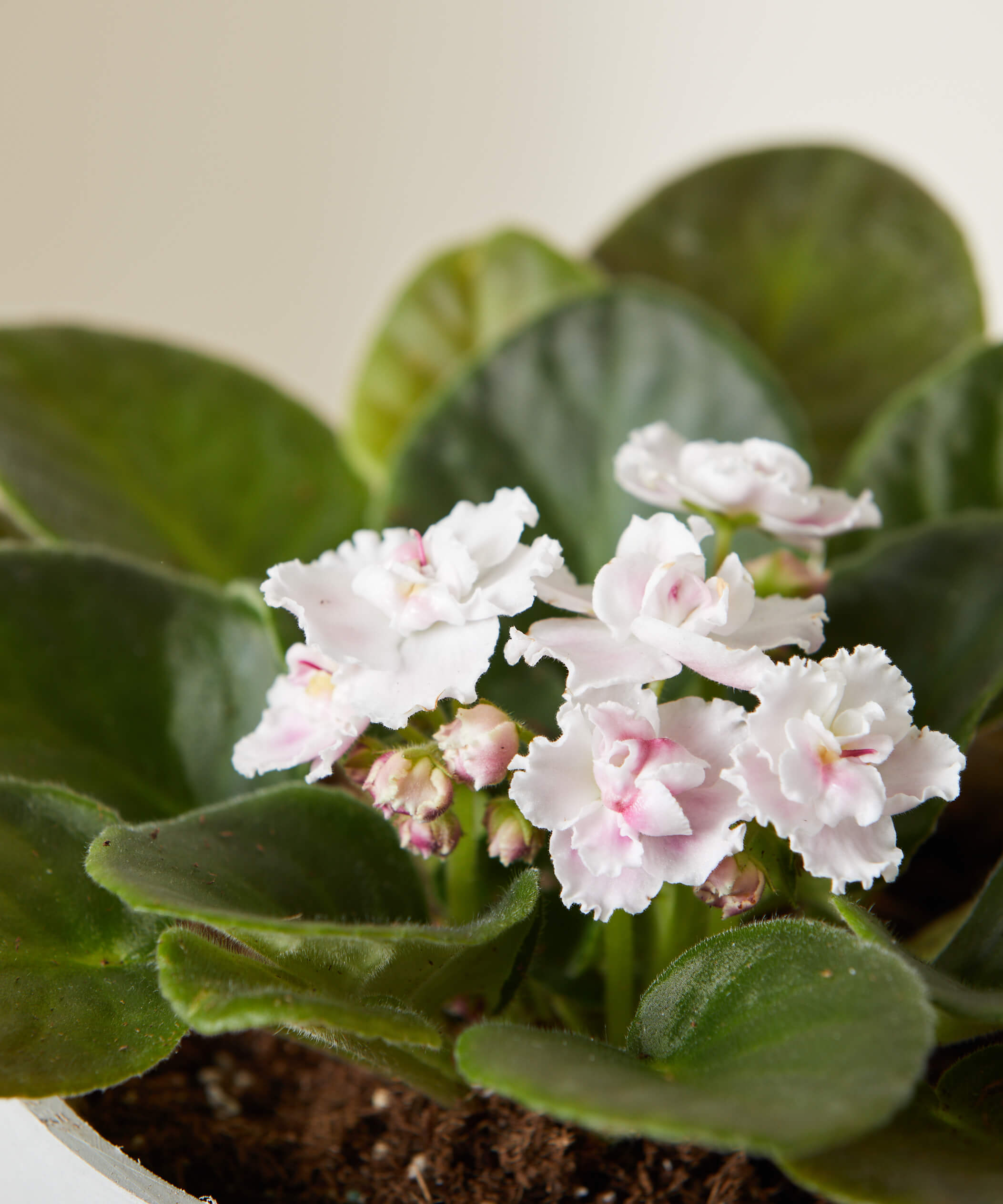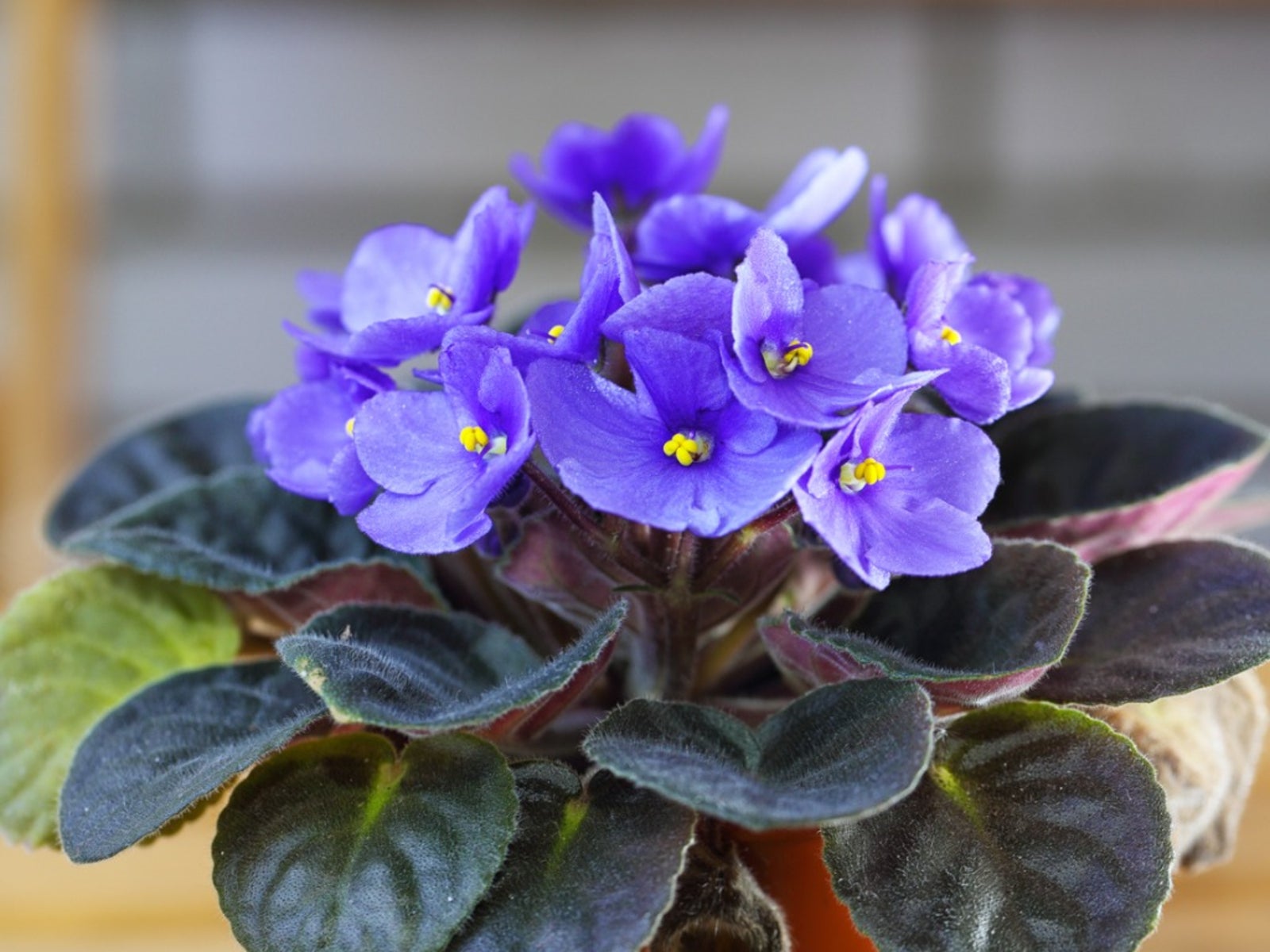As a proud plant parent, noticing unusual spots, splotches, or speckles on your African violet’s leaves can be alarming. But don’t panic – those ghostly white blotches are most likely a common fungal issue called powdery mildew, not a sign of impending doom for your precious plant baby.
With some detective work and proactive care, you can get to the root cause of the spots and restore your African violet to its unblemished beauty in no time. This comprehensive guide breaks down everything you need to know about diagnosing and treating powdery mildew on African violets.
What Causes Powdery Mildew on African Violets?
Powdery mildew is one of the most prevalent fungal diseases in indoor plants like African violets. It manifests as a white, powdery coating on leaves stems or flowers.
While unsightly, powdery mildew rarely kills plants on its own. However, left unchecked, it can weaken them over time, making them more vulnerable to other problems.
Powdery mildew thrives where conditions are warm, humid, and airflow is restricted. Fluctuating temperatures and insufficient light also create an environment conducive to fungal growth.
Too Much Moisture – Wet foliage coupled with poor air circulation allows spores to germinate.
Temperature Swings – Warm days and cool nights promote mildew development.
Low Light – Insufficient light weakens plants, making them susceptible.
High Humidity – Thick, stagnant air enables mildew to spread easily.
Overcrowding – Cramped conditions with limited airflow encourage fungal issues.
How to Treat Powdery Mildew on African Violets
If caught early, powdery mildew can be controlled with some diligent plant parenting. Here are tips for treatment:
Isolate Immediately – Quarantine plants with mildew to prevent spreading spores. Disinfect tools after use.
Prune Affected Areas – Remove leaves, stems, and flowers covered in mildew to halt spread.
Increase Air Circulation – Use fans, increase plant spacing, and prune dense growth to improve airflow.
Adjust Watering Habits – Allow soil to partially dry out between waterings. Avoid wetting foliage.
Apply Fungicides – Use sulfur-based sprays labeled for ornamental plants to kill fungi. Always follow label directions.
Tweak Lighting & Temperature – Move plant to warmer area with bright, indirect light to discourage fungal growth.
Boost Immunity – Apply compost tea or fish emulsion to increase overall plant vigor and resilience against diseases.
With persistence and preventative adjustments, powdery mildew can be conquered. Don’t give up! Even seriously affected plants can rebound with time and care.
Preventing Future Outbreaks of Powdery Mildew
They say an ounce of prevention is worth a pound of cure. This is especially true when it comes to problematic powdery mildew on African violets and other indoor plants. Here are some proactive ways to avoid issues down the road:
-
Allow soil to dry out slightly between waterings to prevent moisture buildup.
-
Water early in the day so foliage has time to dry out before night.
-
Bottom-water plants to keep leaves dry and discourage mildew spores.
-
Increase air circulation with fans and proper plant spacing.
-
Sanitize tools and prune away dead plant matter to eliminate inoculum.
-
Scout regularly for early signs of fungal spots or growth.
-
Avoid drafty areas and temperature fluctuations that stress plants.
-
Provide bright, indirect light to strengthen plants’ defenses.
-
Reduce indoor humidity with dehumidifiers or ventilation as needed.
-
Apply preventative copper sprays before mildew appears.
With vigilant monitoring and optimal care practices, you can stop powdery mildew in its tracks and enjoy flawless African violets. A little prevention goes a long way!
When to Seek Professional Help for African Violets
In severe cases where powdery mildew persists despite your best efforts, it may be wise to enlist professional help. Seek plant expert guidance if you notice:
-
Mildew quickly returns after treatment.
-
Significant leaf loss or complete defoliation.
-
Flowers, buds, or stems are severely affected.
-
White fungal growth covers most of the plant.
-
Leaf spots expand or darken in color despite treatment.
-
Plant declines rapidly or completely collapses.
-
Other concerning symptoms arise like root rot or pests.
Reaching out to houseplant specialists, horticulturists, or disease diagnostic labs can provide invaluable insights. They can positively identify powdery mildew through microscopy or lab testing and recommend advanced treatment options. Don’t wait until it’s too late before seeking assistance.
Take a Deep Breath – Your African Violet Will Bloom Again!
Seeing those creepy white splotches on your African violet’s leaves can certainly be alarming at first. But now that you’re armed with knowledge, you can face powdery mildew fears head-on.
With attentive care, modifications to your plant’s environment, and prompt treatment, you can conquer fungal foes and restore your African violet’s unblemished beauty. Those flawless leaves and colorful blooms will be back before you know it!
The Grow-How Team’s tips for when your African violet has spots on its leaves. Learn why your African violet has spots and what you can do to fix the issue.

Fungal Disease
The African violet plant can develop spots on its leaves from being misted or splashed with water. The African violet’s fuzzy leaves can trap moisture causing fungal or bacterial leaf spot to form. If you don’t want this to happen, water your African violet at the soil level by lifting the leaves carefully or by watering from the bottom up. Never water the leaves or the plant’s center. If you need to add more humidity, put it on top of a pebble tray or put a humidifier nearby instead of misting it.
Powdery mildew is the name of a fungal disease that could be cause by white spots on your African violet that look like powder. Powdery mildew could have formed because the plant lacks air circulation in a hot and humid environment. When combined with a lack of light, these conditions create the perfect environment for powdery mildew to grow.
Cut off the plant’s dead stems and leaves to help it and keep it away from other plants, since fungus can quickly spread from one plant to another. You should move the plant to a place with more light and air flow and spray it with a copper fungicide. If not caught in time, powdery mildew is sometimes fatal to African violets and other indoor plants.
Overwatering
Overwatering an African violet can also cause spots to appear on the leaves. Too much moisture in the soil of a houseplant can sometimes cause edema. Edema shows up as spots most often on the underside of the leaves, but occasionally on the top. These spots have a reddish coloration and will luckily not spread once watering is corrected. Eventually, this dead plant tissue will fall away, or you can trim using sharp, clean pruning scissors.
Water when the soil volume is 25% dry. This plant likes to be kept moist, but does not like to sit in soggy soil. Avoid getting the leaves wet, and the bottom-watering method is recommended. Place your plant in a sink filled with 2-4″ of water. Leave the plant to soak for up to 45 minutes. Test the top of the soil for moisture. If it still feels dry water a little from the top. When the soil around your plant is evenly wet, drain the sink or tub and let the plant rest while it all drains.
Temperature
If your plant has been exposed to temperatures below 55°F, it can cause damage. On the other hand, exposure to direct sun can also cause spots. Make sure the plant’s leaves don’t touch the window panes, as this can make the air inside the house hotter or colder.
What is that white stuff on my african violets ? … Powdery Mildew? … What to do?
FAQ
How do you treat white spots on African violets?
How do you get rid of fungus on African violets?
How to get rid of white bugs on African violets?
What does powdery mildew on African violets look like?
- The Ultimate Guide to Growing Strawberries in Raised Beds - August 8, 2025
- No-Dig Garden Beds: The Easiest Way to Grow a Beautiful Garden - August 6, 2025
- How to Protect and Preserve Wood for Raised Garden Beds - August 6, 2025

